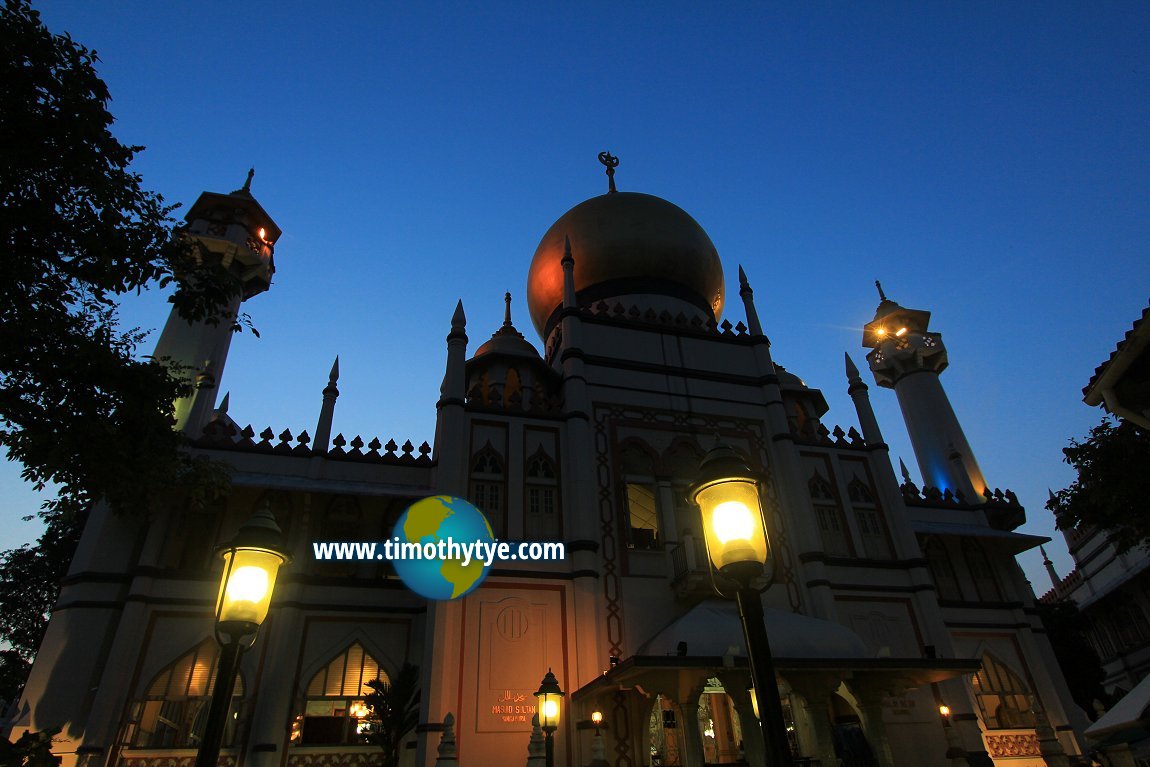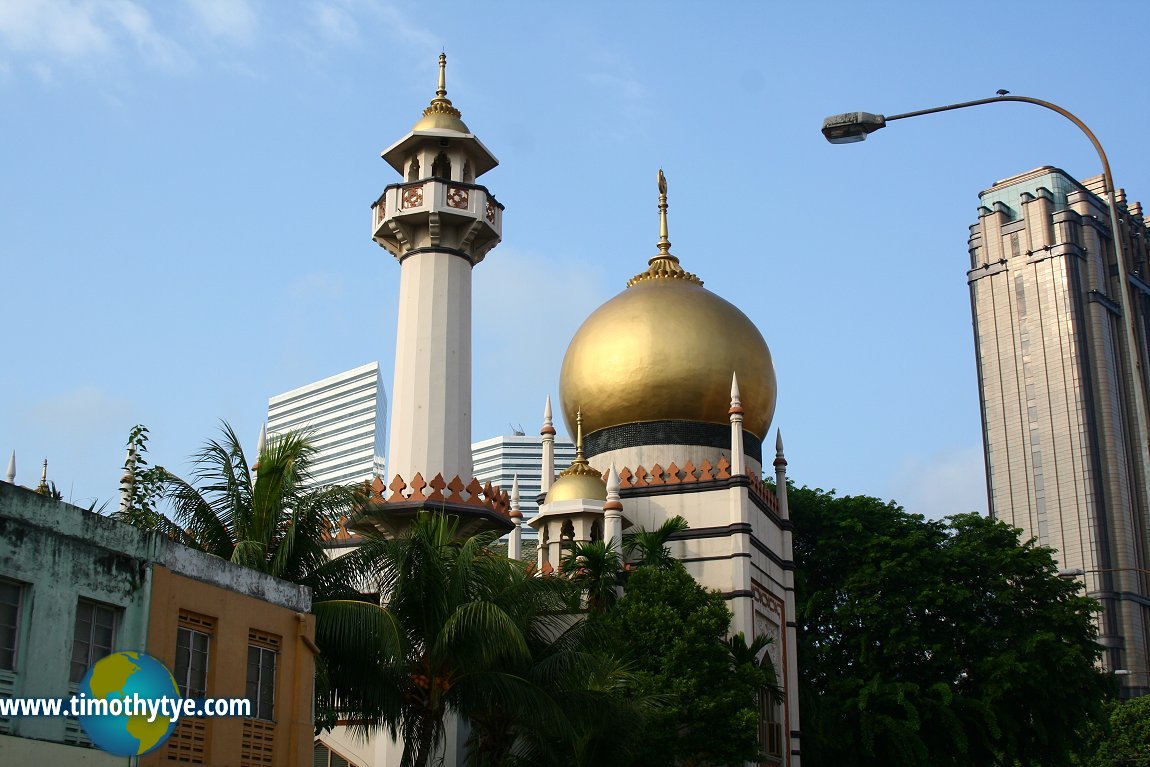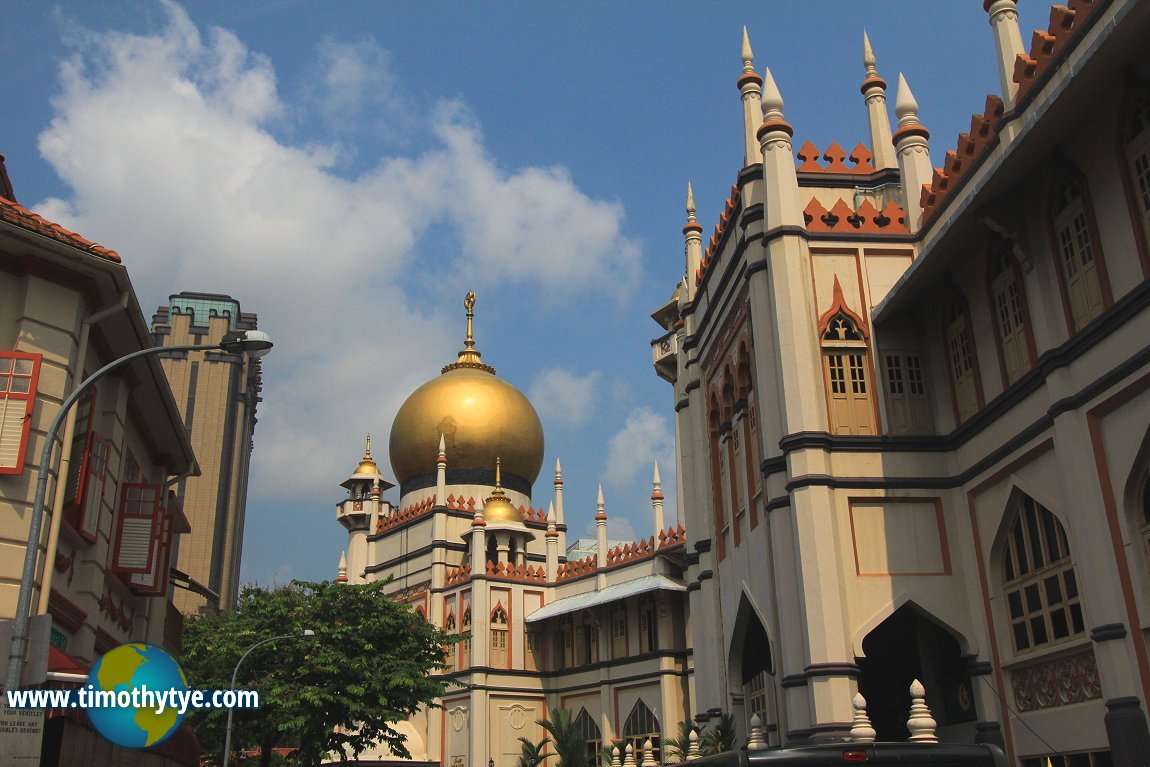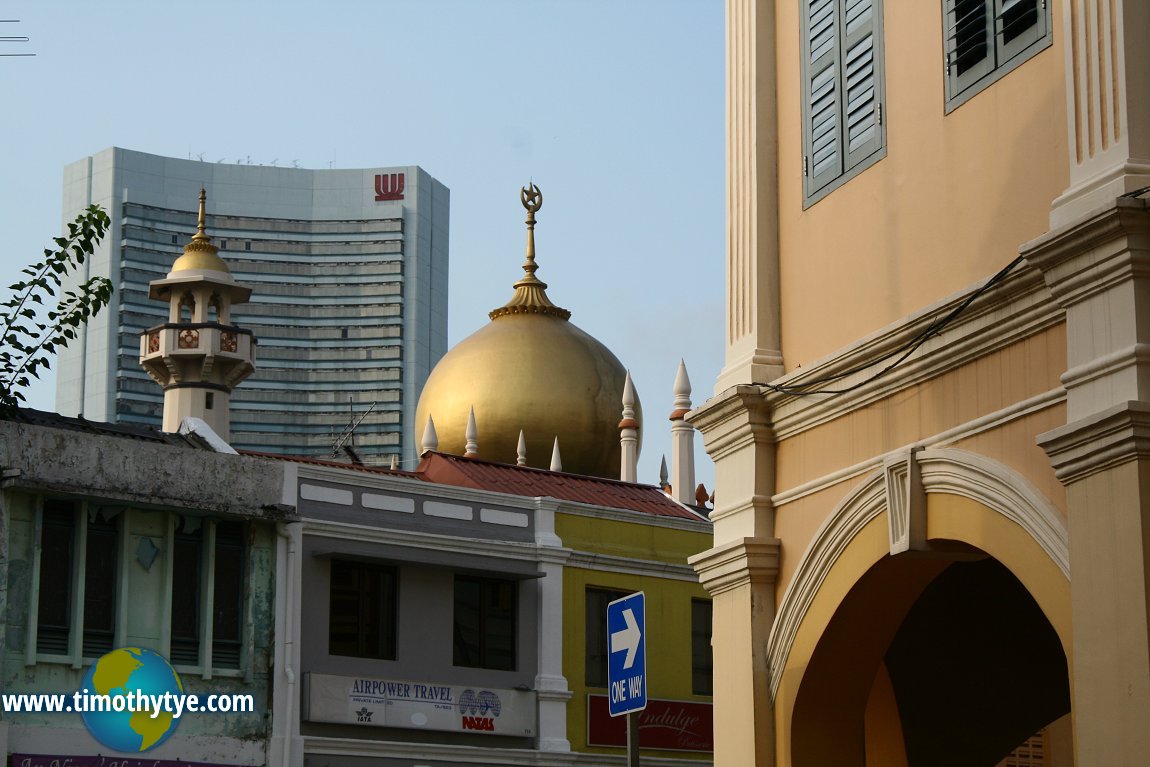 Masjid Sultan at nightfall. (10 July 2011)
Masjid Sultan at nightfall. (10 July 2011)
Masjid Sultan (GPS: 1.30224, 103.85898), or Sultan Mosque, is the biggest mosque in Singapore. It is located at Muscat Street and North Bridge Road, within the Kampong Glam district of Rochor Planning Area in Singapore.
The history of Masjid Sultan dates back to the time when Singapore was ceded to the British in 1819, and the island's chief, Temenggong Abdul Rahman, and the ruler, Sultan Hussain Shah of Johor, acquired a small fortune in exchange of handing over Singapore. Stamford Raffles granted the Temenggong and the Sultan an annual stipend, and the use of Kampong Glam as their residence. Their followers came to live in Kampung Glam from the Riau Islands, Malacca and Sumatra.
Masjid Sultan was built by Sultan Hussain as a place of worship for his followers. It was built next to his palace. Construction was carried out between 1824 and 1826, and funds came from the East India Company. The structure stood until 1924, when the trustees of the mosque approved the plan to replace the old mosque with a new structure.
The new Masjid Sultan was designed by Denis Santry from the architectural firm of Swan and Maclaren. The Saracenic architectural style was adopted, with minarets and balustrades. The present Masjid Sultan was completed in 1928. Since then, the mosque has has stayed essentially unchanged, with only repairs carried out to the main hall in the 1960s and an annex added in 1993.
Masjid Sultan was gazetted as a national monument on 14 March 1975. A replica of it can be found at Taman Tamadun Islam, an Islamic-themed monument park in Kuala Terengganu, Malaysia. It is the 22nd and presently (as of Feb 2011) the latest Islamic monument added to the park.
 Masjid Sultan (10 July 2006)
Masjid Sultan (10 July 2006)
 Masjid Sultan (10 July 2011)
Masjid Sultan (10 July 2011)
 View of the minaret of Masjid Sultan in the Kampong Glam neighbourhood (10 July 2006)
View of the minaret of Masjid Sultan in the Kampong Glam neighbourhood (10 July 2006)
 Masjid Sultan at nightfall. (10 July 2011)
Masjid Sultan at nightfall. (10 July 2011)
Masjid Sultan is  on the Map of North Bridge Road
on the Map of North Bridge Road
List of the Mosques in Singapore; Discover Singapore
 Copyright © 2003-2025 Timothy Tye. All Rights Reserved.
Copyright © 2003-2025 Timothy Tye. All Rights Reserved.
Copyright © 2003-2025 Timothy Tye. All Rights Reserved.

 Go Back
Go Back